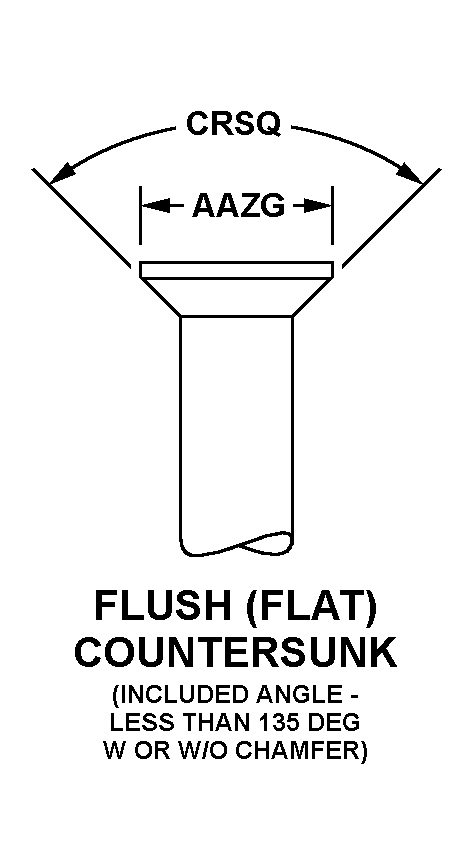5320016012542
Price Quote Get an up to date pricing and availability quote for this product. Order online or over the phone.
Quality Commitment
Serving our customers with quality and safety first.
- AS9120 Certified
- Audited supply chain
- ITAR Registered
- DDTC Registered
- HAZMAT Certified
- Customer service objectives
- Every product 100% inspected

5320-01-601-2542 Specification Set by the OEM (see RNCC code 3)
1.088in. and 1.118in. ⁓1-1/8"
flush (flat) countersunk (included angle - less than 135 deg w or w/o chamfer)
0.065in. ⁓5/64"
0.197in. and 0.199in.
0.313in.
0.280in. and 0.341in.
1400 pounds per square inch
5240 double pounds per square inch
99.0 degrees and 101.0 degrees
VISU-Lok, fastener, blind internally threaded, externally sleeve flush shear head, SELF-Locking
steel comp 4130 nut or steel comp 4140 nut or steel comp 8740 nut
QQ-S-763 fed spec single material response sleeve or ams 5639 assn std single material response sleeve or ams 5641 assn std single material response sleeve
passivate sleeve or cadmium sleeve
QQ-P*416, type ii, class 2 fed spec single treatment response nut
Cross Reference Parts Part numbers that meet the specification outlined on this page and set by the OEM
Identification Item Identification Guide (IIG) and Item Name Code (INC)

Definition Definition of approved item name (AIN): "RIVET,BLIND"
An item consisting of two or more of the following components: stem, rivet body, sleeve, expander, bolt, and collar. It is a headed fastening device with the shank designed to be expanded by means of a separate or integral stem or mandrel, or bolt and expander. It is designed to be installed or expanded from one side only. Excludes nut, blind assembly.
5320-01-601-2542 Material Hazmat, Precious Metals, Criticality, Enviroment, and ESD
Indicates there is no data in the hmirs and the nsn is in a fsc not generally suspected of containing hazardous materials.
Item does not contain precious metal.
No known electrostatic discharge (esd) or electromagnetic interference (emi) sensitivity.
Represents items with no adp components
The item does not have a nuclear hardened feature or any other critical feature such as tolerance, fit restriction or application.
Identification Codes
HMIC: Hazardous Material Indicator Code. A one position code that identifies a hazardous item.
PMIC: Precious Metal Indicator Code. A one position code which identifies items that have precious metals as part of their content. precious metals are those metals generally considered to be uncommon, highly valuable, and relatively superior in certain properties such as resistance to corrosion and electrical conductivity.
ESD: Electrostatic Discharge. Indicates if an item is susceptible to electrostatic discharge or electromagnetic interference damage. electrostatic discharge damage occurs when an accumulation of static electricity generated by the relative motion or separation of materials is released to another item by direct contact. electromagnetic interference damage occurs when an item comes into proximity with an electrostatic or magnetic field.
ENAC: Enviromental Attribute Code. Identifies items with environmentally preferred characteristics.
CRITL: Criticality Indicator Code. Indicates an item is technically critical by tolerance, fit, application, nuclear hardness properties, or other characteristics.






